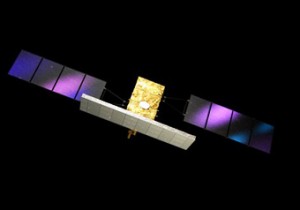Sarfire
SARFIRE project (2010-2012): Spaceborn SAR imagery and environmental data fusion for the dynamical evaluation of land regions susceptibility to FIRE

The main goal of the project is to develop an adaptive system for the automatic assessment of the susceptibility conditions and identification of areas at danger for fires, integrating index e.g. FWI provided by the European Forest Fire Information System, by other studies such as SIGRI and others sources as specified below. The objective of the research is to provide fire and land managers with a dynamic and adaptive model integrating climate, weather, land, vegetation and exploitation conditions, temporally assessing the degree of vulnerability to fire incidents of specific regions, taken as investigation samples. The research will increase end-users understanding of and ability to assess landscape exposed to wildfire. These data may be used during specific wildland fire incidents to increase firefighter safety, pre- position resources, and evaluate fire behavior under a variety of weather conditions.
Important innovation of the project is to obtain an anthropic model of fire ignitions, both voluntary and involuntary, that represent the 99% of fire ignition in Italy and Europe.
The project will provide temporal integration of diverse sources: from vegetation dynamics to climate data influencing drought, winds speed and directions, accumulation of precipitation; from time series analysis providing statistics of fire regime, to topological analysis of infrastructure and usability concerns, such as real-estate speculation, camping or picnic areas, open waste dumps.

The project will benefit from the collaboration with the Civil Protection, the Forester Department, to obtain clue data like fire time series for the interested regions, maps of land registered data (wooding, grazing, cultivation, etc. areas) and hydro geological maps. The project will rely on remote sensing data derived from high temporal resolution. One of the main source of the project will be a set of products made available by COSMO/Skymed to be further integrated with other sources to account for changes incurred because of both natural variations induced by climate, soil hydrology changes, plant growth and harvesting, logging and anthropic intervention often due to hazardous human exploitation. These include, but it is not limited to, evaluation of direct and side effects of indiscriminate utilization, open waste dumps, network of roads and trails, urban aggression to protected areas, which all contribute to swell wildfire.
Monitoring these phenomena suitably integrated and providing tools for advanced 3D synoptic simulation of the potential/expected incidence of fire danger provides a powerful tool for early evaluation of the performances of possible intervention policies. The output of the project would be available on the web and integrated with either GOOGLE MAPS API or ESRI ArcIMS, providing highly scalable framework maps, statistics eliciting the principal sources of vulnerability and 3D synoptic simulations. The map provided will comply with INSPIRE spatial data specification.



